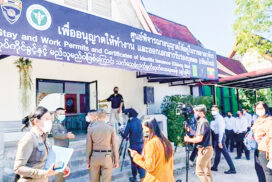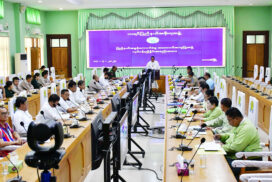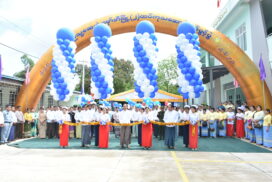As fish resource existence in the natural water is declining year by year, the authorities restrict the fishery and production of fish in order to ensure the long-term production of fish resources. This being so, it is necessary to extend the fish farming business to meet the demand of the growing population.
The fishery sector primarily contributes to Myanmar’s economy as well as the Gross Domestic Product. Fish contains Vitamin D and protein. As such, consumers get protein by consuming fish meals. In addition, the fishery sector creates job opportunities for the local people to engage in fish farming tasks. Extreme capturing of fish resources causes a lessening of seawater and freshwater fish resources, according to the report on the survey on the environment of Myanmar issued by the World Bank in 2019.
Moreover, the research on freshwater fish species should be conducted in successful hatching on a trial basis to produce the marketable fingerlings to be farmed on a commercial scale so as to contribute to the sufficiency of local fish consumption as well as the increase of fish exportation.
The Department of Fisheries is carrying out the production of fishery products year after year to ensure local food sufficiency and increase the export volume of marine products for ensuring food safety and for manufacturing a larger volume of value-added products in producing freshwater and seawater fish, shrimp and other marine products so as to raise the Gross Domestic Product.
As such, local authorities undertake to release fingerlings into the rivers, creeks and lakes of natural water areas for increasing the fish resources in respective financial years. The relevant Departments of Fisheries released fingerlings into the natural water in regions and states this financial year. Meanwhile, the department is giving technical assistance to local fish farmers to operate cage farming not only in rivers, creeks and lakes for enabling the people to have knowledge about fish farming.
Border trade camps handled export and import processes, especially the export of marine products in respective financial years. The statistics issued by the Ministry of Commerce mentioned that Myanmar exported US$858.96 million worth of marine products in the 2019-2020 financial year, US$785.021 million in the 2020-21 financial year, $262.619 million in the six-month mini-budget period in the 2021-22 financial year and $260.082 million from 1 April to August of this financial year.
As such, fish farmers from Myanmar need to import the fish species which can be bred at the relevant fish farming camps in conformity with the natural water surface. Moreover, the research on freshwater fish species should be conducted in successful hatching on a trial basis to produce the marketable fingerlings to be farmed on a commercial scale so as to contribute to the sufficiency of local fish consumption as well as the increase of fish exportation.













